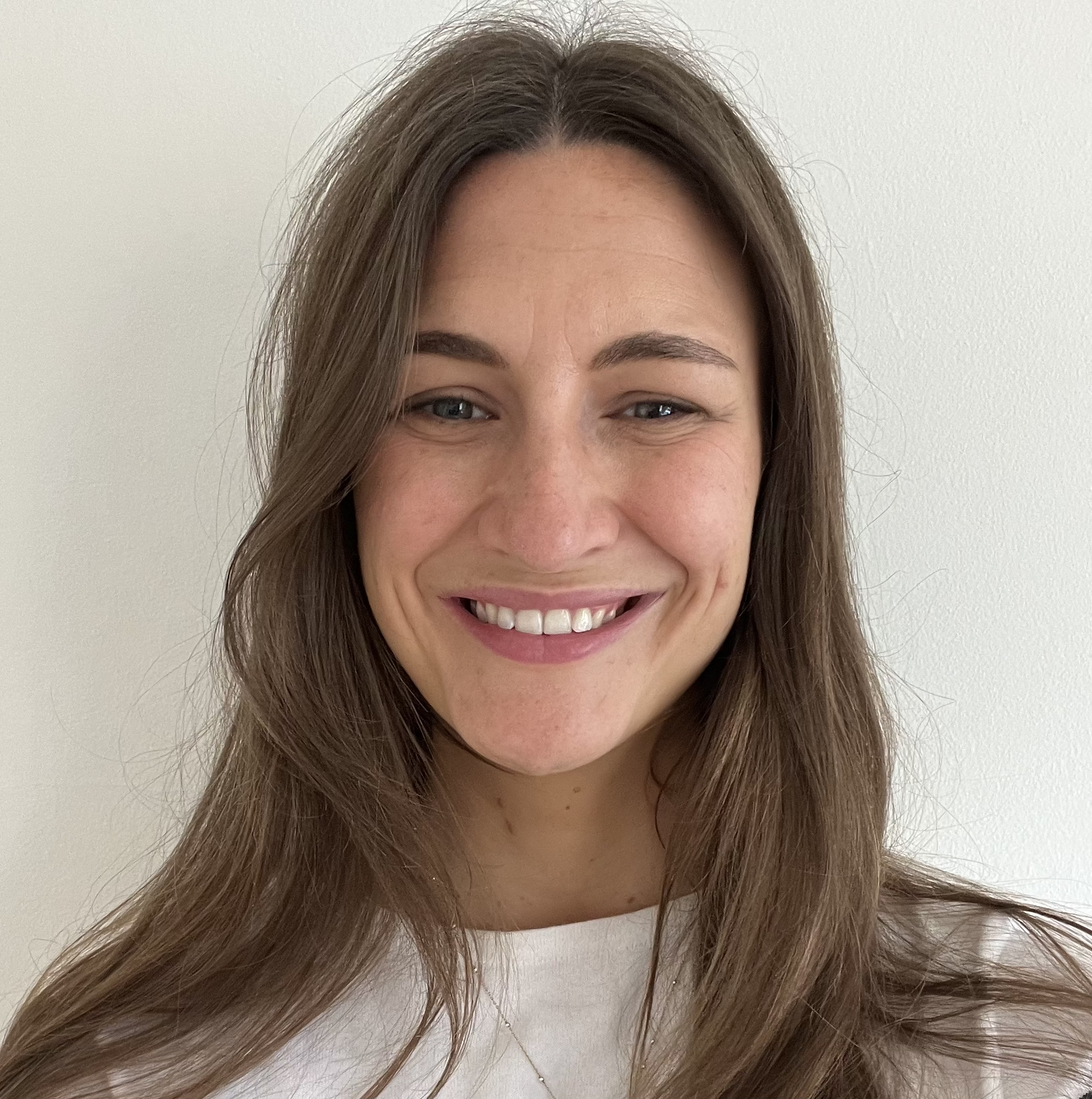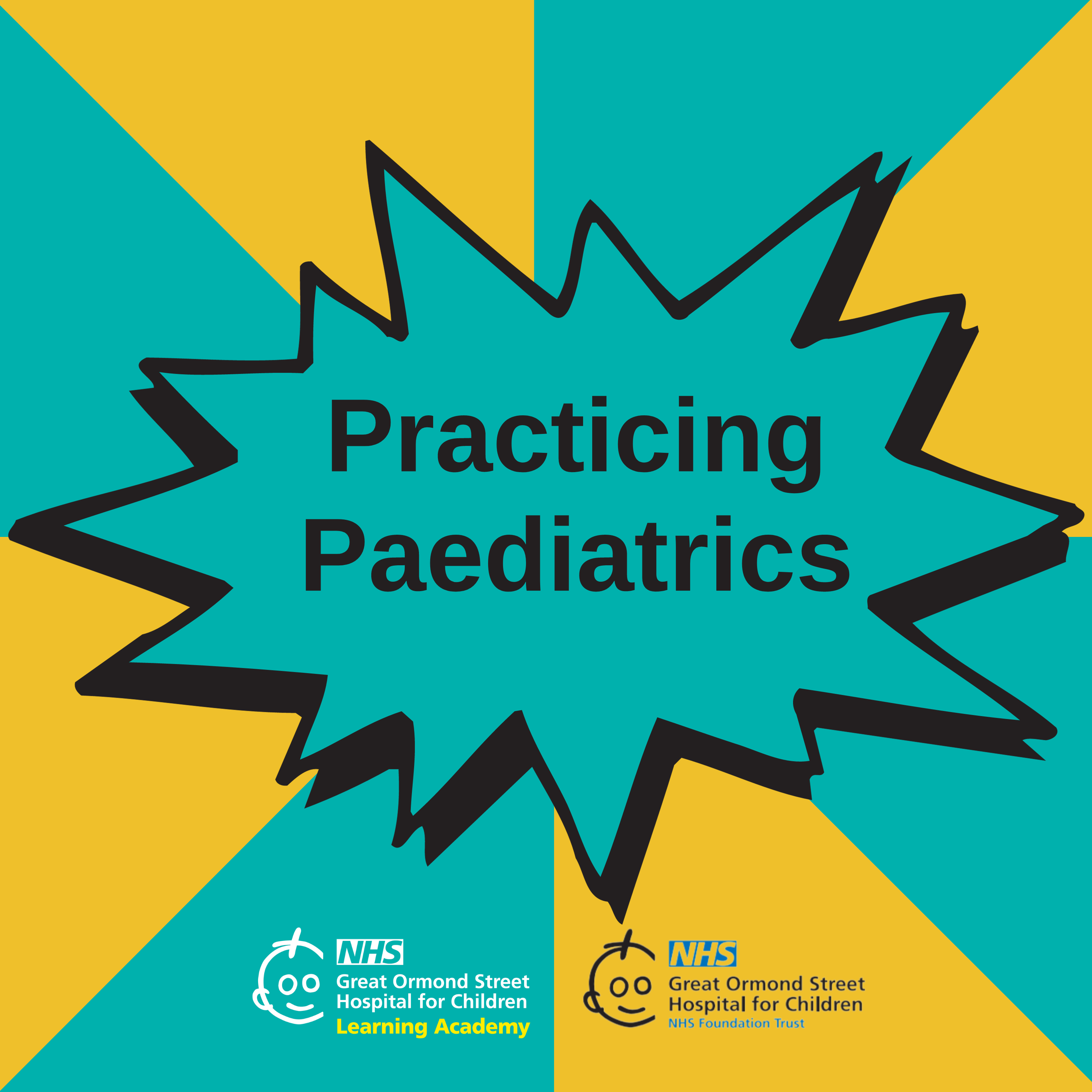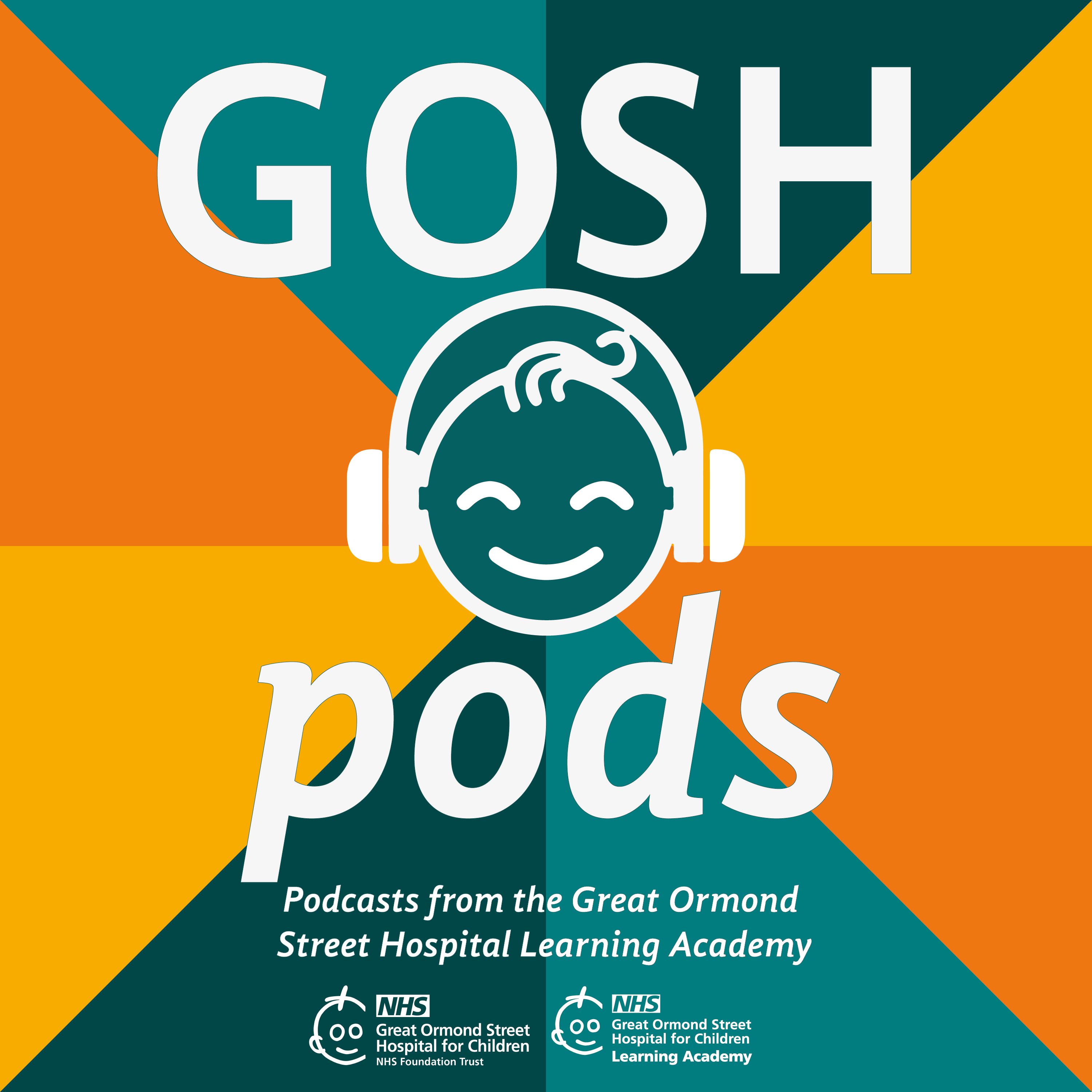Episode Transcript
This podcast is brought to you by the GOSH Learning Academy.
SA: Hello and welcome to Practicing Paediatrics. In this series, we'll be showcasing the specialist work of the clinical staff here at Great Ormond Street Hospital. There are over 60 different clinical specialties at GOSH, providing tertiary and quaternary level care for many rare conditions. So if you are hoping to learn a little bit more about a unique condition or intervention, or just find out more about the advances at GOSH, this may be the series for you.
I'm Dr. Sarah Ahmed, a paediatric registrar and the current digital learning education fellow here at Great Ormond Street.
In today's episode, we're going to be talking with Dr. Juan Kaski about hypertrophic cardiomyopathy or HCM. Dr. Kaski is a consultant paediatric cardiologist at Great Ormond Street and the director of the Inherited Cardiovascular Diseases Unit.
Juan, thank you so much for joining us today.
JK: It's a real pleasure to be here. Thanks for having me.
SA: So before we delve into more detail, I wanted to start by asking, what would you like people to get out of this podcast?
JK: So I guess the main thing that I'd like people to get out of this podcast is, I guess, realization that cardiomyopathies and hypertrophic cardiomyopathy in particular is not as rare as people think and that people, clinicians and allied health professionals looking after children should be aware of the fact that the child in front of them may have a cardiomyopathy.
SA: I think that's a really important point to start off with. And we'll talk a little bit about epidemiology in a sec, but can we start really basic? What is a myopathy and therefore what is hypertrophic cardiomyopathy?
JK: Yeah, so a myopathy is just a disease of the muscle and cardiomyopathy specifically is a primary disease of the heart muscle. There are many different types of cardiomyopathy and we essentially define cardiomyopathy subtypes by their morphological and functional traits. So hypertrophic cardiomyopathy is a condition that's characterized by left ventricular hypertrophy. And that's sort of in the absence of other features, other conditions, that can cause the amount of left ventricular hypertrophy that you're seeing. That's not to say that you can't have hypertrophic cardiomyopathy coexisting with other things such as hypertension or congenital heart disease or valve disease, but it's that the degree of left ventricular wall thickening that you're seeing cannot be explained by other secondary phenomena. But it's essentially a primary heart muscle disease that's characterized by increased left ventricular wall thickness.
SA: I see. So it's kind of a description of the, the structural differences that occur in the condition.
JK: That's exactly right. And I think, you know, a really important point, and we may come to this later, but is that this sort of initial description of hypertrophic cardiomyopathy or left ventricular hypertrophy isn't really a diagnosis in its own right. It's sort of the start of a diagnostic process. So you identify the fact that there's left ventricular hypertrophy, it makes you think, well, could this patient have a form of heart muscle disease? Could this be hypertrophic cardiomyopathy? And that should then trigger a search for a more specific underlying aetiology.
SA: I understand. I see. That's really interesting. I hadn't really thought of it that way before. I do want to follow up on that, but I just want to touch briefly on what you were saying earlier about it being more common than possibly realized. Can we talk a little bit about the numbers, the epidemiology?
JK: Yeah, absolutely. So the truth is that we don't have very much data in the paediatric population. So we know that in older teenagers and in adults, the population prevalence of hypertrophic cardiomyopathy is somewhere in the region of 1 in 500. There are some data suggests that it's even more common than that, maybe up to 1 in 200. So that's super, super common. So if you think about you know, what I always say to my patients, if you think about Wembley stadium with 90, 000 people in the crowd, that there's going to be a couple of hundred people in the crowd who have one of the genes that can cause hypertrophic cardiomyopathy.
In children, it's rarer than that. And that's partly related to this concept that we call age related penetrance. So although most of the causes of hypertrophic cardiomyopathy are genetic and often autosomal dominant – so an individual who's born with with a faulty gene variant has that from, from the moment that they're born – the features of the conditions, the way the gene expresses itself, doesn't tend to be there at the very beginning. It often develops over time. So that's part of the explanation for why the numbers are much, much rarer in the paediatric population. So the estimates are somewhere in the region of 3 per 100,000, so compared to 1 in 500.
But that's almost certainly an underestimate. And I think that's sort of partly because of the age related penetrance, but also partly because until quite recently, people hadn't been really screening for hypertrophic cardiomyopathy in the paediatric population. There was this sort of idea that this was a disease that only really affected older teenagers and adults. And so routine systematic screening for hypertrophic cardiomyopathy in younger children hadn't really been carried out. But we now know and you know, we published something not that long ago to, to support this, that, that actually once you start looking for these conditions in younger children, you do start finding features the disease at a younger age. So, it's probably a lot more common than we think it is in the paediatric population.
SA: And what would prompt you to go looking for it? What would prompt you to do that screening process that you've just described?
JK: Yeah. So I think there's a, there's a number of different sort of reasons or ways in which patients with hypertrophic cardiomyopathy can present. Sometimes they may present with symptoms and those may be sort of quite nonspecific symptoms. So again, just having in your mind, the possibility that child presenting with symptoms like breathlessness or chest pain or dizziness or palpitations might have an underlying cardiomyopathy. It may be as a result of an incidental finding. Detection of a murmur or an abnormal ECG. And again, interpreting those tests with this sort of cardiomyopathy mindset is really important.
But in terms of the screening, it's really family screening that we're talking about. So these are often almost always actually conditions that are inherited as autosomal dominant traits. And so there's a 50 percent chance of passing on the gene variant to each of your children if you're an affected adult. And so family screening, clinical screening, as well as genetic testing of all first degree relatives, including children, is an essential part of the way that we make the diagnosis.
We've just published the new European Society of Cardiology guidelines for the management of cardiomyopathies. It's the first time that there's an international guideline for all types of heart muscle disease. And within that we have a new recommendation for promoting clinical and genetic screening, even in younger children, with a first degree relative with a diagnosis of the cardiomyopathy. So that's a major way in which we identify these individuals.
SA: That's fantastic. And it sounds like there's been a real culture shift as well, especially if you're now publishing the first guidance on it. And I'll make sure that's all linked down below so people can have a look at it if they want to.
JK: Yeah, absolutely. And I think, you know, it's a great, really a great advance to have guidelines for all of the cardiomyopathies. Up until now, we've only really had guidelines for hypertrophic cardiomyopathy, which we've sort of updated in this new document, but actually the new guidelines cover the broad range of cardiomyopathies and, and importantly across the age range. So from children all the way through to, through to adulthood. And it was a real sort of honour for me to share those guidelines.
SA: And so thinking a little bit about what we were saying earlier about hypertrophic cardiomyopathy, not necessarily being the diagnosis itself, but more a symptom of the diagnosis, what are the type of conditions that would cause you to get hypertrophic cardiomyopathy?
JK: Yeah, so I think it's sort of the start of the diagnostic process. It's almost like, it's the sort of, it's the first name, but you still need to work out what the middle name is and what the surname is. So once you identify that there is hypertrophic cardiomyopathy, so left ventricular things like hypertension, valve disease, et cetera, then you start looking for, for an individual aetiology or a specific aetiology. And in many cases that will be genetic. In other cases, it may not be genetic. There are a number of acquired causes for hypertrophic cardiomyopathy also. So things like steroid use or infants of diabetic mothers in the paediatric population.
But the majority of cases will be familial or genetic. And, and the vast majority of those are going to be caused by mutations in the sarcomere protein genes. So those are the genes that are responsible for coding for for the basic contractile apparatus of the heart muscle. So that sort of one in 500 number in terms of the prevalence of hypertrophic cardiomyopathy in adults refers really to sarcomeric disease, so mutations in the sarcomere protein genes. And we know that in, in the paediatric population, those also account for 60, 70 percent of cases of hypertrophic cardiomyopathy.
But it's also important, particularly in younger children, particularly in infancy to rule out other causes of hypertrophic cardiomyopathy. And those can be sort of broadly categorized into metabolic conditions. So inborn errors of metabolism, things like Pompe disease in infancy or in older adults, Fabry disease, for instance. But also syndromic causes. And particularly that refers to Noonan syndrome and other related rasopathy syndromes that are very commonly associated with, with hypertrophic cardiomyopathy. There's a number of neuromuscular conditions that can also cause hypertrophic cardiomyopathy and probably the most relevant of these is Friedreich's ataxia, that tends to cause hypertrophic cardiomyopathy with an onset in sort of late childhood, early adolescence, generally. But yeah, so there's a number of different sort of genetic, syndromic, metabolic conditions that can cause hypertrophic cardiomyopathy.
And it's important to identify those causes because the natural history is different, the process is different but also increasingly there are specific treatments available for some of these conditions. So enzyme replacement therapy for Pompe disease, beck inhibitors for razopathy syndromes like Noonan syndrome. And more recently there are, there are now new drugs really developed specifically for sarcomeric hypertrophic cardiomyopathy. So it's not just a sort of an academic exercise to find the underlying cause, but actually it has important implications for treatment but also for family screening. If you know exactly what you're looking for, it's much easier to screen relatives in the family.
SA: Yeah, absolutely. So thinking about that patient journey. So if you have a child that's presenting to you with breathlessness or symptoms of heart failure, what are the investigations you would do to diagnose the, the hypertrophic cardiomyopathy in the first place? That's such a mouthful to say, the hypertrophic cardiomyopathy in the first place.
JK: So you can say HCM for short.
SA: HCM yeah. Um, and then what are the investigations that you would do once you've kind of got that confirmed diagnosis?
JK: Yeah, absolutely. So that's a really important question. So the way that we make the diagnosis, is by looking for left ventricular hypertrophy. And so imaging, cardiac imaging is essential for that. And the first line investigation for in terms of imaging is echocardiography. So that's widely available, it's relatively cheap and fairly easy to, to interpret. So the diagnosis in most cases is made on echocardiography, but actually the assessment, the initial assessment of hypertrophic cardiomyopathy is more than just echo. It's a multi parametric assessment. The ECG, the 12 lead ECG is an essential tool. In fact, as a screening tool, it's probably more sensitive than Echocardiography. So you often see ECG changes developing before you start to see the development of left ventricular hypertrophy on, on echo . So we would always do an ECG as well as an echocardiogram.
SA: And what are the changes that you see on the ECG?
JK: So on the ECG so you may see repolarization abnormalities, so things like T wave inversion in the inferior leads or the lateral leads. You might see left axis deviation, which in the paediatric population is extremely rare. So if you see that, that's, that's a red flag for heart muscle disease and other cardiac conditions. You might see pathological Q waves as well. And then depending on the underlying cause, you may see additional features. You might see ventricular pre excitation, which might sort of point you towards a specific aetiology. So something like mitochondrial disease, for instance.
What's probably less helpful on the 12 ECG is voltage criteria for ventricular hypertrophy. So that's often something we'll focus on but it's not so unusual for us to see quite tall voltages in sort of slim fit teenagers. So that's, that's a less sensitive measure on the ECG. But yeah, ECG is essential. Echo is very important.
And then there are other investigations that sort of feed into that search for an underlying aetiology. So things like a cardiac MRI, which allows you to see where there's any scar tissue as well as to measure ventricular wall thickness and ventricular mass. Genetic testing, extremely important. Laboratory tests, things like NT pro BMP and troponin levels can be very useful at the point of diagnosis, but also to guide treatment and to monitor disease progression. Cardiopulmonary exercise testing, again, is an extremely useful tool in individuals with symptoms to try to work out whether those symptoms are cardiac or not. And Holter monitoring. So ambulatory ECG monitoring, very important, particularly for risks, sudden death risk stratification in this, in this population. But lots and lots of different tests that sort of go into that initial assessment.
What I haven't mentioned is family history, but, but actually drawing a, a sort of a proper family tree of at least the three generation family tree of pedigrees is essential again when you're evaluating an individual with a suspected cardiomyopathy.
SA: Is there anything specific that you see on examination or is it more just general signs?
JK: No, so there are some specific features that you might pick up on examinations. From a general point of view, you might identify some of the features, some dysmorphic features that might suggest the diagnosis of a rasopathy syndrome, for instance, or you might sort of pick up hypotonia, hepatosplenomegaly and point towards more of a metabolic cardiomyopathy.
We know that about 25 percent of children with hypertrophic cardiomyopathy have what we call left ventricular outflow tract obstruction. So there's a narrowing as the heart pumps blood out through the aorta. And that's classically associated with an ejection systolic murmur at the left upper sternal edge. About 50 percent of people develop provocable obstruction. So it may not be there at rest, but it's that you can provoke it. And so one of the classic signs is that either on Valsalva, or if you ask the child to squat and then stand up, you might detect a murmur that isn't there at rest. And that's a sign of provokable left ventricular outflow tract obstruction.
And then I guess in more advanced stages you might pick up features of congestive cardiac failure, but that's quite unusual in the pediatric population.
SA: And then thinking a little bit about management. Well, I suppose actually thinking a little bit about presentation and management. So is it more likely that these kids will present in an acute situation or is it more of a chronic decompensation that then leads to them getting diagnosed?
JK: So actually in our practice, the most common reason for presentation actually through family screening. So as an individual in the family, you screen the relatives and you find asymptomatic individuals. It's unusual for children to present acutely unwell. Although occasionally, unfortunately, the first presentation can be with a ventricular fibrillation cardiac arrest, an out of hospital cardiac arrest. And we, we do occasionally maybe 2 or 3 times a year diagnose somebody with hypertrophic cardiomyopathy as a result of an out of hospital cardiac arrest . But otherwise, if it's not family screening, it tends to be either an incidental finding. So an abnormal ECG performed for other reasons or detection of a murmur whilst being examined for something else. Or occasionally with symptoms, but they tend to be sort of relatively mild symptoms. It'll be chest pain on exercise or a history of palpitations or perhaps not quite being able to keep up with their peers during PE lessons at school, things like that.
SA: And then, so thinking about management, firstly, those kids that you've picked up on screening, how often would you touch base with them to see if it would then develop into something else?
JK: Yeah, so the follow up for anybody with a clinical diagnosis of hypertrophic cardiomyopathy is pretty frequent during childhood. So we tend to see them every 6 to 12 months routinely. Regardless of whether they're symptomatic or not. And that's, that's first of all, so that we can see whether there's any evolution in the clinical features, but also because the key aspects of management is identifying those children who perhaps are at a slightly higher risk of ventricular arrhythmias and sudden cardiac death. And so a lot of the tests that we do are sort of geared towards identifying those individuals who are at high risk.
The management of hypertrophic cardiomyopathy is largely symptom palliation. Children with the condition are asymptomatic. We tend not to treat them. And we tend to treat symptoms and the symptoms will either be because of outflow tract obstruction or because of diastolic dysfunction or because of microvascular ischemia. And so the treatment is largely with medication, but it's really to improve symptoms.
Family screening is another aspects of the symptom management as well as psychological support genetic testing, et cetera.
And then the third bit of the management sort of pillar of management really is, is sudden death risk prevention.
SA: So just picking up on that. How do you go about risk stratifying these children to prevent that risk of sudden death?
JK: So we, we know that there are some individuals, some children with hypertrophic cardiomyopathy that have a higher risk of ventricular arrhythmia, sudden cardiac death. And so identifying who those individuals are and who would benefit the most from implanting an ICD is an essential part of the management. And until relatively recently, that sort of process was just extrapolated from adult data. So there were sort of risk factors that have been shown in adult populations to be markers of increased risk and we were sort of applying them to children. But actually we showed a few years ago that it's not a very accurate way of assessing risk. And really, in response to that, we set up an international consortium which now has data from over nearly 2000 patients from over 50 centres around the world. And we use that to develop a paediatric specific risk stratification model. And so it sort of takes risk factors that are that have been reported to be important in children from, from the literature. And they’re clinical risk factors. So they're things that you measure on a day to day basis. So severity of left ventricular hypertrophy, left atrial size, history of syncope, presence of non sustained ventricular tachycardia on Holter monitoring. And we sort of put those together into a mathematical model essentially, that estimates the risk of sudden cardiac death for that particular individual at five years. And so you come up with a sort of percentage risk of sudden death at five years. And then we use that in our conversations, discussions with patients and families when we're thinking about implanting an ICD.
So by sort of by convention, there's no sort of hard and fast rules, but if the five year risk is greater than 6%, it's generally considered to be high risk. Less than 4 percent is generally considered to be low risk. And then there's sort of people with 4 to 6% who are an intermediate risk. But those thresholds really need to be used as part of a shared decision making process. So for some children, a risk of 5% might actually be extremely high. And that's enough to put an ICD in whereas. For others, you know, 7 percent in someone who's younger and has other comorbidities perhaps might not be enough to implant an ICD. But it's a really helpful tool to discuss with patients and their families and, and yeah, so think about which patients would benefit most from an ICD.
SA: Yeah, it sounds like it. And it's great that we've now got a paediatric specific tool as well. And we're not just working off the data that's come from the adults.
JK: Yeah, absolutely.
SA: So bearing that in mind and moving on to think about prognosis. What is the general outcome for these children?
JK: It's actually the prognosis for the vast majority of children with hypertrophic cardiomyopathy is pretty good. So we know that children who present with symptoms with heart failure symptoms in the first year of life have a worse prognosis and that's usually heart failure related and that's largely driven by metabolic cardiomyopathies and syndromic cardiomyopathies.
But beyond that first year of life, actually for, for most children with hypertrophic cardiomyopathy, the prognosis is pretty good. It is true that a diagnosis of hypertrophic cardiomyopathy in childhood is associated with a higher rate of complications. So death during childhood or or sort of adolescence, and then a higher prevalence of progression to heart failure and development of atrial fibrillation and stroke in adulthood. It's a similar natural history curve to adult onset hypertrophic cardiomyopathy, but it's shifted to the left by a couple of decades. So it happens a little bit earlier. But actually for most children with hypertrophic cardiomyopathy their quality of life is very good and their prognosis is excellent. So we you know, it's not unusual for us to see in our clinics, the children of patients that we'd looked after as children themselves.
SA: Oh fantastic.
JK: So yeah, generally the prognosis is very good. And I think, the sort of the sudden death issue is something that we've become quite good at sort of identifying those individuals who are at high risk and then we can help to prevent sudden cardiac death by implanting defibrillator devices, ICD’s are very effective at treating malignant ventricular arrhythmias.
SA: And is HCM an area where there's a lot of research happening?
JK: Yeah, absolutely. So I think where it's a sort of crossroads really in terms of management of hypertrophic cardiomyopathy. For decades, really, there have not been any significant advances in treatment and treatment was generally empirical without any clinical trial basis, et cetera. But that really, really has changed in the last few years. So we now have a new class of drugs, cardiac myosin inhibitors, that are really the first class of drugs ever to be developed specifically for hypertrophic cardiomyopathy. And so they target the underlying pathophysiology of the disease. And there have already been phase three clinical trials in adult patients that have been extremely successful in fact, cardiac mycin inhibitors now have a role in the management algorithm of symptomatic obstructive hypertrophic cardiomyopathy in adults. That's part of the new guidelines as well. And we're expecting paediatric trials to start in the next few months. So that's an extremely exciting area. There's also the possibility that these drugs, in addition to improving symptoms, might actually have a disease modulating effect. There's sort of promise that perhaps if started early enough, they might alter the natural history of the disease, which is extremely exciting, but particularly for the paediatric population.
And we're also now seeing gene therapy entering the field in hypertrophic cardiomyopathy. So again, there's already a a phase two clinical trial for gene therapy for Danon disease, which is a rare metabolic condition that causes a very severe form of hypertrophic cardiomyopathy and also a gene therapy program for sarcomeric disease for NYBPC3 related disease. That’s one of the two most common genes that causes hypertrophic cardiomyopathy and the first adult patient has already been dosed with gene therapy. And again, there are plans for paediatric gene therapy trial but I imagine would be sort of up and running over the next year or so. So it's a really, really exciting, time.
And then there's a lot of sort of research going into not just in terms of treatment, but, but also in terms of risk prediction understanding the underlying pathophysiology the disease. So yeah, so it's a really exciting time in this field.
SA: Definitely. A lot of things to keep an eye on.
So I wanted to end with a couple of quick fire questions. I mean, you've already, we've already talked about this a lot, but firstly, what specifically would you like a general paediatrician to know about HCM?
JK: Yeah, so think about hypertrophic cardiomyopathy in patients who present with nonspecific symptoms. And remember that, that hypertrophic cardiomyopathy is just the start of the diagnostic process. And seek advice from specialist centres in terms of initial evaluation and ongoing management.
SA: And you've already mentioned a few papers so far, but secondly, are there any useful resources that you would recommend?
JK: Yes I think the new European Society of Cardiology cardiomyopathy guidelines are a very comprehensive document. And, and they encompass not just adult practice, but also paediatric practice. So I think that's a very good sort of starting point. And then there are a couple of papers on the development of sudden death risk prediction models for children with hypertrophic cardiomyopathy. So there's something called the Hocum Risk Kids score, which was something we were responsible for producing and developing. And it allows us a much more individualized assessment of sudden death risk. So it gives us an estimated risk of five years and we use that as part of our sort of decision making process for, for ICD implantation.
SA: And finally, what are your takeaway learning points?
JK: I think, again, as I mentioned at the very beginning, these conditions, not just hypertrophic, but cardiomyopathy more generally probably more common than people think and the initial presentations might be sort of pretty non specific. And so it's really important for clinicians who are seeing patients in A& E, in a general paediatric clinic even in, in general practice, just to be aware of the possibility of a cardiomyopathy as the explanation for the symptoms that the particular child may be experiencing. And and I think you know, the importance of really good communication between expert cardiomyopathy centres and general paediatrics, general practice, because often that's where the initial presentation will be. And it's also where some of the sort of day to day management will take place
SA: Amazing. Juan, thank you so very much for talking with me today.
JK: No, no problem at all. It's a real, real pleasure. Thanks. Thanks again for having me.
SA: Thank you for listening to this episode of Practicing Paediatrics. We would love to get your feedback on the podcast and any ideas you may have for future episodes. You can find a link to the feedback page in the episode description or email us at digital. learning at gosh.nhs.uk. You'll also find a list of resources and further reading in the description.
If you want to find out more about the work of the GOSH Learning Academy, you can find us on social media on Twitter, Instagram, and LinkedIn. You can also visit our website at www.gosh.nhs.uk and search Learning Academy. You can visit the GOSH DEN via our website to see what courses we have on offer.
We have lots of exciting new podcasts coming soon, so make sure you're subscribed wherever you get your podcasts. We hope you enjoy this episode and we'll see you next time. Goodbye.





